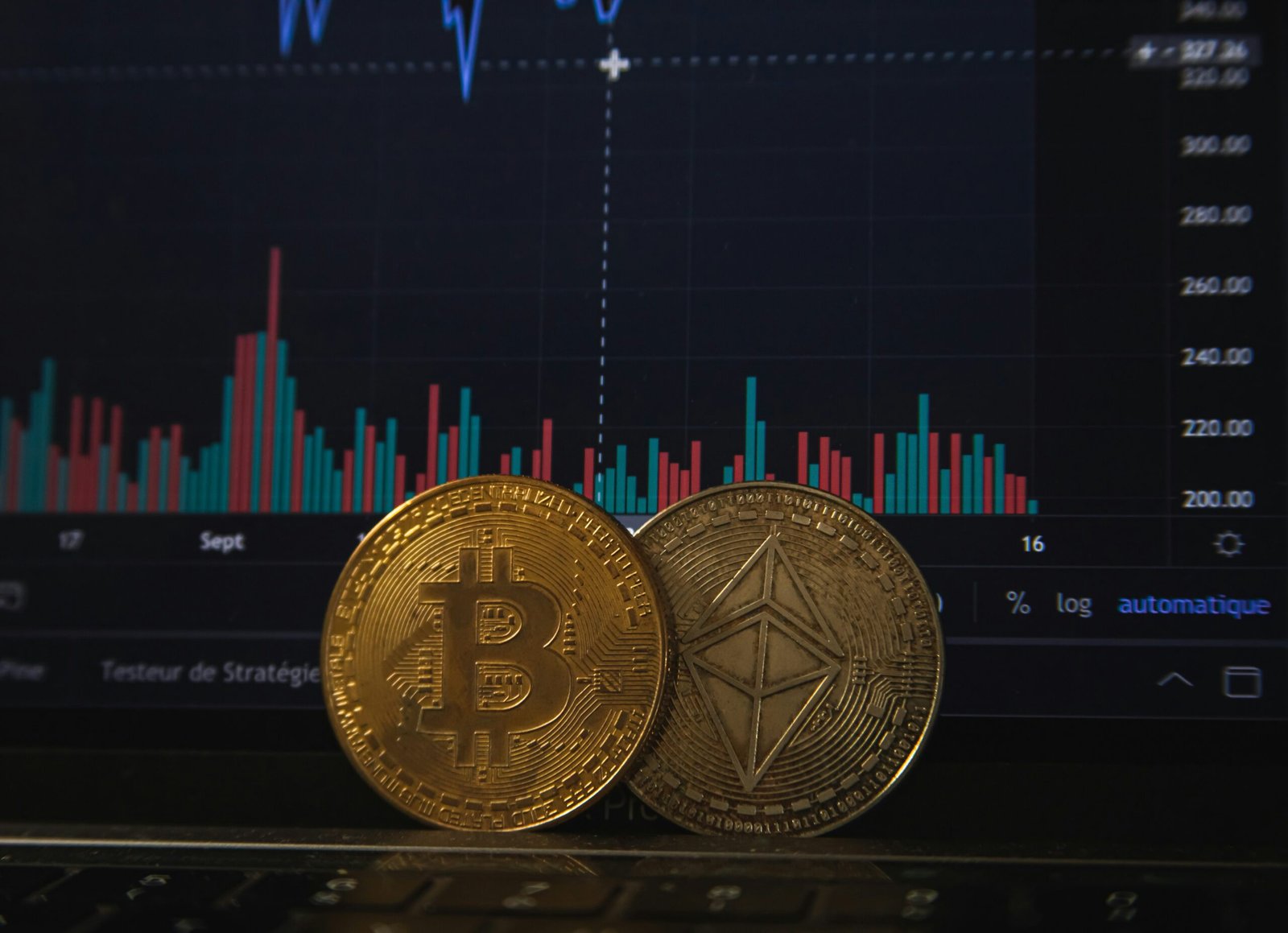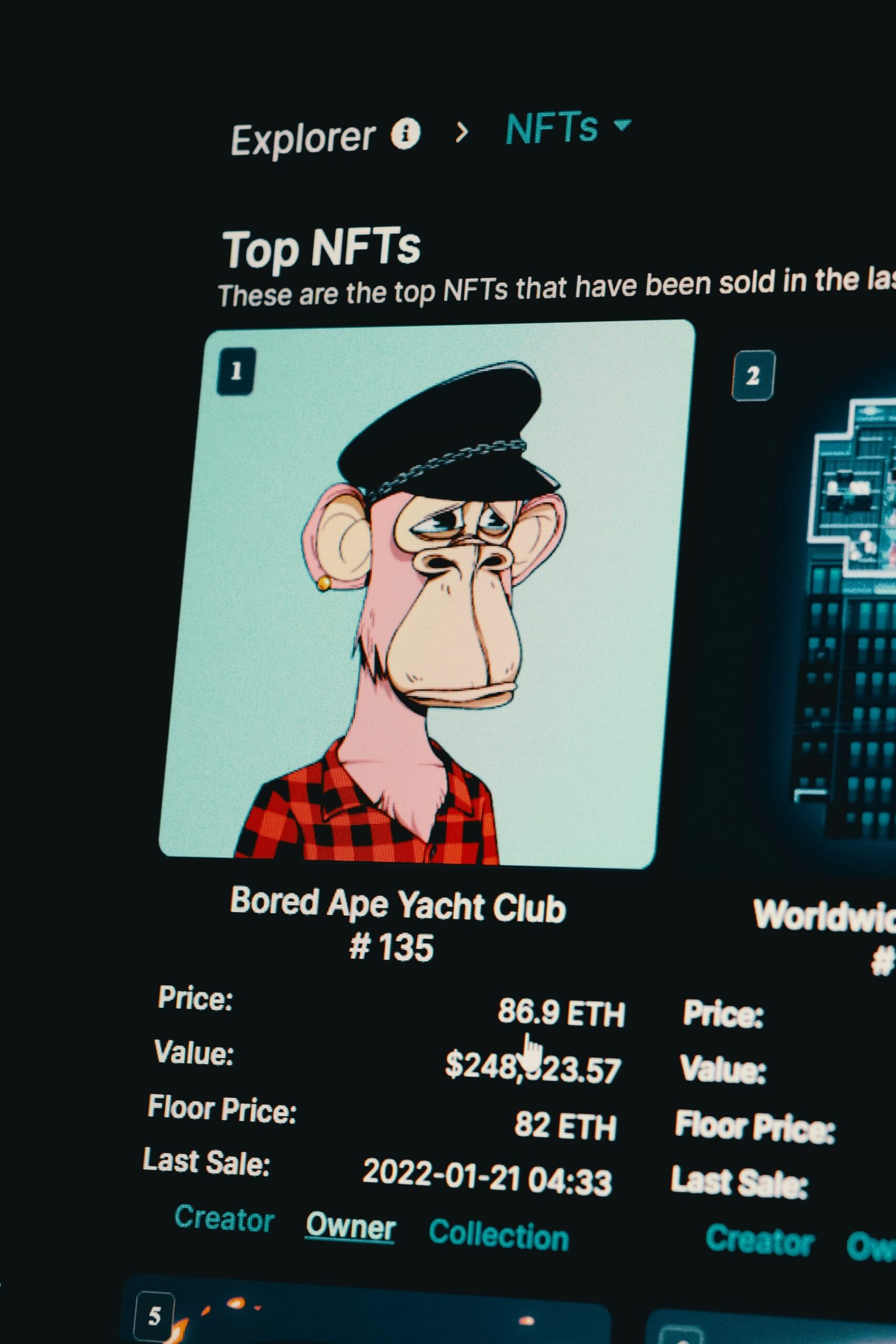Understanding Sui Airdrop: A Comprehensive Guide to Sui’s Smart Contract Platform
Introduction to Sui Airdrop
The Sui platform has emerged as a significant player in the blockchain ecosystem, garnering attention for its innovative approach to smart contracts. As a decentralized network, Sui leverages advanced consensus algorithms and high-performance virtual machines to facilitate secure and efficient execution of decentralized applications (dApps). Its unique architecture not only enhances scalability but also ensures robustness and interoperability, making it a compelling choice for developers and enterprises alike.
An airdrop, in the context of blockchain, refers to the distribution of cryptocurrency tokens to a broad audience. This practice is often employed as a marketing strategy to promote new projects, encourage user engagement, and foster community growth. For the Sui community, airdrops represent a pivotal event that aligns with these objectives. By distributing tokens to its users, Sui aims to incentivize participation, reward early adopters, and expand its user base.
Participating in the Sui airdrop offers numerous benefits. Firstly, it provides an opportunity for users to acquire Sui tokens without any monetary investment, lowering the entry barrier for new participants. Secondly, it promotes a sense of ownership and involvement among community members, as token holders are often more likely to engage with the platform and contribute to its ecosystem. Additionally, airdrops can stimulate market activity by increasing token liquidity and distribution, potentially driving up the token’s value.
As we delve deeper into the specifics of the Sui airdrop, its mechanics, eligibility criteria, and potential impact, it is crucial to understand its foundational role in the platform’s growth strategy. By strategically leveraging airdrops, Sui not only aims to enhance its visibility and adoption but also to build a robust and engaged community that can sustain its long-term vision. This comprehensive guide will provide you with all the necessary insights to navigate and benefit from the Sui airdrop effectively.
What is Sui?
Sui is an innovative smart contract platform that stands out within the burgeoning blockchain landscape due to its unique approach and robust infrastructure. At its core, Sui is maintained by a permissionless set of validators, which function similarly to validators or miners in other blockchain systems. These validators are essential for maintaining the integrity and security of the network, ensuring that transactions are processed accurately and efficiently.
The Sui platform is designed with several key features that set it apart from other smart contract platforms. One of its primary objectives is to provide a scalable and secure environment for decentralized applications (dApps). By leveraging cutting-edge consensus mechanisms and state-of-the-art cryptographic techniques, Sui aims to achieve high throughput and low latency, making it an attractive option for developers looking to build and deploy dApps.
Another notable feature of Sui is its focus on usability and developer experience. The platform offers a comprehensive suite of tools and resources to facilitate the development process, including a user-friendly programming language and extensive documentation. This emphasis on accessibility is intended to lower the barrier to entry for developers, enabling a more diverse range of participants to contribute to the ecosystem.
In addition to its technical capabilities, Sui is also committed to fostering a vibrant and inclusive community. Through initiatives such as grants, hackathons, and educational programs, Sui aims to support and nurture the growth of its ecosystem. This community-driven approach is designed to encourage collaboration and innovation, ensuring that the platform remains at the forefront of the blockchain industry.
Overall, Sui’s combination of technical excellence, developer-friendly tools, and community engagement positions it as a compelling option within the smart contract platform space. Its focus on scalability, security, and usability makes it a unique and valuable addition to the blockchain landscape, offering significant potential for future growth and development.
Visit the Sui Bridge page.
Sui’s Underlying Technology
Sui’s technological foundation is built upon an advanced and robust stack, with Rust being a core component of its implementation. Rust, known for its emphasis on performance and safety, plays a pivotal role in enhancing the Sui platform by ensuring high-speed execution and minimizing security vulnerabilities. Its unique memory management capabilities effectively eliminate common programming errors, such as null pointer dereferencing and buffer overflows, which are critical for maintaining the integrity and reliability of blockchain systems.
The choice of Rust is particularly advantageous for Sui, as it enables the platform to handle a high volume of transactions efficiently, which is essential for scalability. Rust’s concurrency model further optimizes Sui’s performance by allowing parallel processing without the risk of data races, thereby boosting the overall throughput of the network.
In addition to Rust, Sui leverages Sui Move, an asset-centric adaptation of the Move programming language originally developed by Facebook’s Libra project. Sui Move is tailored specifically for defining and managing digital assets on the Sui blockchain. It introduces a more intuitive and secure way to handle assets by utilizing resource types, which enforce strict rules around asset creation, transfer, and destruction. This design greatly reduces the risk of asset duplication and loss, providing a more secure and reliable environment for developers and users.
Sui Move’s integration with the Sui platform allows for the creation of sophisticated smart contracts that can manage complex asset interactions with precision and security. By combining Rust’s performance and safety features with Sui Move’s robust asset management capabilities, Sui offers a highly efficient and secure smart contract platform that meets the diverse needs of modern blockchain applications.
Sui Move is an evolved version of the original Move programming language, tailored specifically for the Sui blockchain. This advanced scripting language is designed to facilitate the creation and execution of smart contracts, ensuring enhanced security, scalability, and efficiency. Sui Move’s syntax is clean and intuitive, making it accessible to developers familiar with other programming languages while incorporating unique features that leverage the full potential of the Sui blockchain.
Core Principles and Syntax
The core principles of Sui Move revolve around safety, resource management, and flexibility. One of the standout features of Sui Move is its emphasis on resource-oriented programming. This approach treats digital assets as first-class citizens, ensuring that they cannot be duplicated or inadvertently lost. This is particularly crucial in blockchain environments where the integrity and uniqueness of assets are paramount.
In terms of syntax, Sui Move introduces modules, structs, and functions, akin to many modern programming languages. A module in Sui Move encapsulates code and data, while structs define custom data types. Functions within these modules allow for the execution of specific operations. This modular approach not only enhances code reusability but also promotes cleaner and more maintainable codebases.
Differences from Original Move Language
While Sui Move shares its foundational elements with the original Move language, several modifications and enhancements make it uniquely suited for the Sui blockchain. One significant difference is the optimization for parallel execution, leveraging Sui’s architecture to achieve higher throughput and lower latency. Additionally, Sui Move integrates more robust safety checks and formal verification tools, which help in preemptively identifying and mitigating potential vulnerabilities in smart contracts.
Use Cases and Examples
Sui Move’s versatility makes it ideal for a wide range of blockchain applications. Common use cases include decentralized finance (DeFi) platforms, non-fungible tokens (NFTs), and decentralized autonomous organizations (DAOs). For instance, a smart contract for an NFT marketplace written in Sui Move would ensure the unique ownership and transfer of digital assets with high efficiency and security.
Here is a simple example of a Sui Move smart contract:
module MyModule {struct MyStruct has key {value: u64,}public fun create_my_struct(value: u64): MyStruct {MyStruct { value }}}This example defines a module named “MyModule” with a struct “MyStruct” that holds an unsigned 64-bit integer. The function “create_my_struct” initializes and returns an instance of “MyStruct”. Such straightforward constructs illustrate the clarity and power of Sui Move, empowering developers to build sophisticated applications with relative ease.
The Role of Validators in Sui
In the Sui ecosystem, validators play a crucial role in maintaining the integrity and security of the network. Validators are responsible for verifying transactions, producing new blocks, and ensuring the overall health of the blockchain. By participating in the consensus mechanism, validators help achieve a decentralized and trustless environment that is fundamental to the success of the Sui platform.
Validators in Sui operate by running specialized software that allows them to validate transactions and add them to the blockchain. This process involves checking the validity of each transaction, ensuring it adheres to the network’s rules, and then including it in a new block. Once a block is proposed, validators reach a consensus on its validity through a voting process. If a majority agrees, the block is added to the chain, and the validator who proposed the block is rewarded with transaction fees and, potentially, new SUI tokens.
The consensus mechanism supported by validators in Sui is known as Byzantine Fault Tolerance (BFT). BFT is designed to function effectively even if some validators act maliciously or fail to operate correctly. This mechanism ensures that the network remains secure and that transactions are processed efficiently, even in the presence of faulty nodes. The BFT consensus in Sui requires a supermajority of validators to agree on the state of the blockchain, thus providing a high level of security and reliability.
While the role of validators in Sui is similar to that in other blockchain systems, such as Ethereum 2.0 and Cosmos, there are some key differences. For example, Sui’s consensus mechanism is optimized for high throughput and low latency, allowing for faster transaction processing compared to traditional Proof of Work (PoW) systems. Additionally, Sui validators are incentivized through a combination of transaction fees and staking rewards, which aligns their interests with the overall health and security of the network.
In summary, validators are the backbone of the Sui ecosystem, ensuring that transactions are processed accurately and efficiently. By participating in the BFT consensus mechanism, they help maintain the decentralized nature of the network while providing a robust and secure platform for users and developers alike.
The Sui Token: Utility and Economics
The Sui token is the native cryptocurrency of the Sui smart contract platform, designed with a fixed supply to ensure long-term value stability. The primary utility of the Sui token lies in its use for transaction fees, commonly referred to as gas fees. These fees are necessary for executing smart contracts and other operations within the Sui ecosystem, ensuring the network remains efficient and secure.
One of the key economic implications of the Sui token’s fixed supply is its potential to act as a deflationary asset. In contrast to inflationary tokens, which can dilute value over time, a fixed supply can help maintain or even increase the token’s value as demand grows. This characteristic makes the Sui token not only a utility token but also a valuable asset for investors and participants in the network.
The Sui platform employs a delegated proof-of-stake (DPoS) consensus mechanism, which enhances both security and scalability. In this model, token holders can delegate their Sui tokens to validators, who are responsible for validating transactions and maintaining the network. Validators are incentivized through rewards, which are distributed proportionally to the amount of Sui tokens delegated to them. This system encourages active participation and ensures that the network remains robust and decentralized.
Users can stake their Sui tokens by delegating them to a validator, which not only secures the network but also provides staking rewards. This process is facilitated by the concept of epochs, which are predefined periods within the Sui network. At the end of each epoch, rewards are distributed to validators and their delegators based on their contributions. This cyclical process ensures continuous engagement and incentivizes long-term commitment to the network.
Participating in the Sui Airdrop
To participate in the Sui airdrop, there are several key steps to follow. Ensuring a smooth and successful experience involves understanding the prerequisites, setting up necessary tools or wallets, and following the specific process for claiming the airdropped tokens. Here’s a detailed guide to help you navigate through the participation process.
First and foremost, it is essential to meet the basic prerequisites. Participants need to have a compatible cryptocurrency wallet that supports the Sui blockchain. Popular options include MetaMask and Trust Wallet. It is crucial to ensure your wallet is properly configured to interact with the Sui network. Verify the compatibility and update your wallet to the latest version if required.
Once your wallet is set up, you’ll need to secure some SUI tokens for transaction fees. These tokens can be acquired through various exchanges that support Sui. Having a small amount of SUI tokens will ensure that you can cover the gas fees associated with claiming the airdrop.
Next, stay informed about important dates and deadlines related to the airdrop. The Sui team will typically announce the airdrop schedule through their official channels, such as their website, social media, and community forums. Mark these dates on your calendar to avoid missing out on the opportunity.
When the airdrop begins, follow the official instructions provided by the Sui team. This usually involves connecting your wallet to the Sui platform and performing specific actions, such as staking tokens or participating in community activities. Carefully follow the step-by-step guide provided to ensure you complete all necessary actions correctly.
Additionally, be aware of any eligibility criteria. Some airdrops may be restricted to certain regions or require participants to hold a minimum amount of tokens. Review these criteria in advance to confirm your eligibility.
To maximize your participation benefits, consider joining the Sui community on social media platforms and forums. Engaging with other participants and staying updated with the latest news can provide valuable insights and tips. Furthermore, participate in any bonus activities or referral programs that may be offered to earn additional tokens.
By carefully following these steps, you can successfully participate in the Sui airdrop and take full advantage of the benefits it offers. Remember to stay vigilant and always refer to official sources for accurate information and instructions.
Future Prospects and Community Involvement
The Sui smart contract platform is poised for significant advancements in the coming years. As the blockchain industry continues to evolve, Sui’s roadmap includes a variety of strategic upgrades designed to enhance its capabilities and maintain its competitive edge. Key among these prospective developments is the integration of more sophisticated smart contract functionalities, bolstering the platform’s utility for developers and enterprises alike.
One of the anticipated upgrades is the implementation of enhanced scalability solutions. This will address the growing demand for higher transaction throughput and reduced latency, ensuring that Sui can support a broader range of decentralized applications (dApps) with greater efficiency. Additionally, improvements in interoperability are on the horizon, facilitating seamless interaction between Sui and other blockchain networks. Such advancements are critical for fostering a more interconnected and versatile blockchain ecosystem.
Community involvement is a cornerstone of Sui’s growth strategy. The platform thrives on active participation from its users, developers, and stakeholders. To this end, Sui regularly hosts hackathons, developer conferences, and community meetups, providing opportunities for collaboration, learning, and innovation. These events are crucial for fostering a vibrant community that contributes to the platform’s continuous improvement and adoption.
Users can contribute to Sui’s success in various ways. Developers are encouraged to build and deploy dApps on the platform, leveraging its robust infrastructure and smart contract capabilities. Moreover, community members can participate in governance by voting on proposals that shape the future direction of the network. Engaging in discussions on forums, contributing to the project’s open-source codebase, and promoting Sui within broader blockchain communities are all valuable contributions.
Staying informed about Sui’s ongoing and future initiatives is essential for anyone interested in the platform’s development. Following official channels, such as Sui’s blog, social media accounts, and newsletters, ensures that users are up-to-date with the latest news, updates, and events. By remaining engaged and proactive, the community can collectively drive Sui towards a successful and innovative future.






